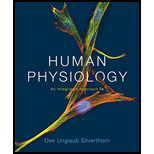
a.
To explain: The similarities and dissimilarities between mastication and deglutition.
Introduction: The primary function of the
b.
To explain: The similarities and dissimilarities between microvilli and villi.
Introduction: The primary function of the digestive system is the movement of nutrients, water, and ions from the external environment to the internal environment of the body. The digestive system completes its function with the help of four processes- digestion, absorption, secretion, and motility. The cell membrane and the intestine play a major role in the processes of the digestive system.
c.
To explain: The similarities and dissimilarities among peristalsis, segmental contractions, migrating motor complex, and mass movements.
Introduction: The motility is the process of movement of material through the GI tract as a result of muscle contraction. The motility fulfills the two purposes of the digestion process. One purpose is the moving of food from the mouth to the anus, and another purpose is the mixing of food mechanically to break it into uniformly small particles. The gastrointestinal tract is mostly composed of single-unit smooth muscles. A different region of GI tracts exhibits different types of contraction.
d.
To explain: The similarities and dissimilarities between chyme and feces.
Introduction: The primary function of the digestive system is the movement of nutrients, water, and ions from the external environment to the internal environment of the body. The digestive system completes its function with the help of four processes- digestion, absorption, secretion, and motility. The chyme and feces are formed during the different processes of the digestive system.
e.
To explain: The similarities and dissimilarities between short reflexes and long reflexes.
Introduction: Motility and secretion are the two primary regulated functions of the four gastrointestinal processes. The motility is regulated so that the food gets proper time to digest in the intestine. The secretion is regulated so that the appropriate digestive enzymes can break down food for absorption. The enteric nervous system (ENS) regulates motility, secretion, and growth of the digestive tract.
f.
To explain: The similarities and dissimilarities among submucosal plexus, myenteric plexus, and vagus nerve.
Introduction: The enteric nervous system (ENS) regulates motility, secretion, and growth of the digestive tract. The enteric nervous system (ENS) works in isolation as well as in association with the central nervous system (CNS).
g.
To explain: The similarities and dissimilarities among cephalic, gastric, and intestinal phases of digestion
Introduction: The digestive process is composed of a series of reactions involving digestive hormones and juices as a result of which complex molecules are broken down into smaller ones. The digestion process starts from the oral cavity.
Want to see the full answer?
Check out a sample textbook solution
Chapter 21 Solutions
EBK HUMAN PHYSIOLOGY
- 22. Which of the following mutant proteins is expected to have a dominant negative effect when over- expressed in normal cells? a. mutant PI3-kinase that lacks the SH2 domain but retains the kinase function b. mutant Grb2 protein that cannot bind to RTK c. mutant RTK that lacks the extracellular domain d. mutant PDK that has the PH domain but lost the kinase function e. all of the abovearrow_forwardWhat is the label ?arrow_forwardCan you described the image? Can you explain the question as well their answer and how to get to an answer to an problem like this?arrow_forward
- Describe the principle of homeostasis.arrow_forwardExplain how the hormones of the glands listed below travel around the body to target organs and tissues : Pituitary gland Hypothalamus Thyroid Parathyroid Adrenal Pineal Pancreas(islets of langerhans) Gonads (testes and ovaries) Placentaarrow_forwardWhat are the functions of the hormones produced in the glands listed below: Pituitary gland Hypothalamus Thyroid Parathyroid Adrenal Pineal Pancreas(islets of langerhans) Gonads (testes and ovaries) Placentaarrow_forward
- Essentials of Pharmacology for Health ProfessionsNursingISBN:9781305441620Author:WOODROWPublisher:Cengage
 Fundamentals of Sectional Anatomy: An Imaging App...BiologyISBN:9781133960867Author:Denise L. LazoPublisher:Cengage Learning
Fundamentals of Sectional Anatomy: An Imaging App...BiologyISBN:9781133960867Author:Denise L. LazoPublisher:Cengage Learning  Medical Terminology for Health Professions, Spira...Health & NutritionISBN:9781305634350Author:Ann Ehrlich, Carol L. Schroeder, Laura Ehrlich, Katrina A. SchroederPublisher:Cengage Learning
Medical Terminology for Health Professions, Spira...Health & NutritionISBN:9781305634350Author:Ann Ehrlich, Carol L. Schroeder, Laura Ehrlich, Katrina A. SchroederPublisher:Cengage Learning





